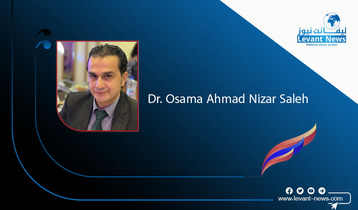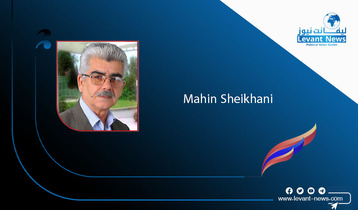-
The Politics of Arming Ukraine

The Americans had said that they wouldn’t be supplying Ukraine with High Mobility Artillery Rocket Systems (himars) until they made the decision to do the opposite based on the situation on the ground combined with the promise from Kiev not to use the weapons to attack Russian territory.
This incident has triggered warnings from Moscow as well as the first Russian cruise missile attacks on the Ukrainian capital in weeks. Vladimir Putin was demonstrating that Russia would expand its range of targets if Ukraine received more long-range weapons from the U.S. and other Western countries.
Nevertheless almost immediately after this ‘communication through violence’, the British announced their decision to send long-range rocket artillery to help Ukraine in its war against Russia. Or help with “vital weapons they need to defend their country” as the UK Defence Secretary described it.
The decision from Moscow to concrete it’s forces in the east of Ukraine has changed the nature of much of the conflict. We’ve pivoted away from urban conflict into the duelling of two nations artilleries across vast areas around a long frontline. Who can shoot the most, the furthest for the longest is the name of the game and it favours the traditional Russian preference for indirect weapons with their larger resources.
This imbalance explains the increasingly desperate pleas for military support coming out of Kiev. Interestingly the notion of vast supplies of ‘defensive weapons’ is becoming more stretched in its definition. Back in March the US vetoed a deal that would have seen Polish MiG-29 fighter planes supplied to Ukraine but I wonder whether this could be revisited now.
Russia needs to maintain its strategic edge. “The more long-range weapons you supply, the further we will push away from our territory” the line of Ukrainian forces, Foreign Minister Sergei Lavrov told reporters.
Yet in using its military to respond to the supply of game changing weapons, Russia risks changing the name inadvertently itself. Most obviously this could mean striking inside NATO territory by mistake or design, but there are a host of other options worth considering.
Another unlikely option would be that Russia uses tactical nuclear weapons on the battlefield in the east of Ukraine either for demonstrative purposes or to break a logjam. What would the NATO response be to this?
Interestingly, NATO states have been quite public and transparent, it would seem, about their military support to Ukraine. The precise cost, quantity and type of weapons is well known, demonstrating no attempt to achieve strategic deniability.
Social media images from pro-Russian accounts show the capture of NATO anti-tank missiles, but again the risk of losing these weapons appears less of a concern to NATO states than the risk of Ukraine losing to Russia at a macro level.
The feedback loop of such weapons is another important element. The use of antitank and drone technology in the first month of the war was a clear part of Ukraine’s successful resistance. Will the longer range artillery systems be able to hold the Russian advance or even allow more Ukrainian counter attacks?
Russia may find that its military is more impacted by sanctions and the inability to secure complicated guidance or tech components to its own arms supplies than any particular Western transfer to the Ukrainian side, but as ever in war all these factors form part of the balance that decides who has the edge at any given point.
Politically President Putin may feel he has to somehow back up his rhetoric around warning against foreign interference in his ‘special military operation’ which he has ratcheted up since events begun. It looks at present like NATO allies have in essence called his bluff on this front deciding that an active defence is the only option to pushback against Putin’s wider ambitions beyond Ukraine.
Another area to watch is whether NATO allies will support efforts to push back against the Russian naval blockade of Ukraine which is raising the prospect of a global food crisis. This situation is more complicated by Ukraine’s use of sea mines as part of its defence of the Black Sea. Anti ship missiles have been supplied to Kiev and the Russians have already lost their flagship, Moskva, but as ever there remains plenty of room for escalation.
This snapshot of the politics of arming Ukraine reveals the complexity and uncertainty of its role at the centre of this bloody geopolitical crisis.

BY: James Denselow
You May Also Like
Popular Posts
Caricature
BENEFIT Sponsors BuildHer...
- April 23, 2025
BENEFIT, the Kingdom’s innovator and leading company in Fintech and electronic financial transactions service, has sponsored the BuildHer CityHack 2025 Hackathon, a two-day event spearheaded by the College of Engineering and Technology at the Royal University for Women (RUW).
Aimed at secondary school students, the event brought together a distinguished group of academic professionals and technology experts to mentor and inspire young participants.
More than 100 high school students from across the Kingdom of Bahrain took part in the hackathon, which featured an intensive programme of training workshops and hands-on sessions. These activities were tailored to enhance participants’ critical thinking, collaborative problem-solving, and team-building capabilities, while also encouraging the development of practical and sustainable solutions to contemporary challenges using modern technological tools.
BENEFIT’s Chief Executive Mr. Abdulwahed AlJanahi, commented: “Our support for this educational hackathon reflects our long-term strategic vision to nurture the talents of emerging national youth and empower the next generation of accomplished female leaders in technology. By fostering creativity and innovation, we aim to contribute meaningfully to Bahrain’s comprehensive development goals and align with the aspirations outlined in the Kingdom’s Vision 2030—an ambition in which BENEFIT plays a central role.”
Professor Riyadh Yousif Hamzah, President of the Royal University for Women, commented: “This initiative reflects our commitment to advancing women in STEM fields. We're cultivating a generation of creative, solution-driven female leaders who will drive national development. Our partnership with BENEFIT exemplifies the powerful synergy between academia and private sector in supporting educational innovation.”
Hanan Abdulla Hasan, Senior Manager, PR & Communication at BENEFIT, said: “We are honoured to collaborate with RUW in supporting this remarkable technology-focused event. It highlights our commitment to social responsibility, and our ongoing efforts to enhance the digital and innovation capabilities of young Bahraini women and foster their ability to harness technological tools in the service of a smarter, more sustainable future.”
For his part, Dr. Humam ElAgha, Acting Dean of the College of Engineering and Technology at the University, said: “BuildHer CityHack 2025 embodies our hands-on approach to education. By tackling real-world problems through creative thinking and sustainable solutions, we're preparing women to thrive in the knowledge economy – a cornerstone of the University's vision.”
opinion
Report
ads
Newsletter
Subscribe to our mailing list to get the new updates!





















